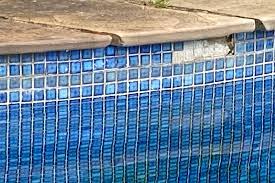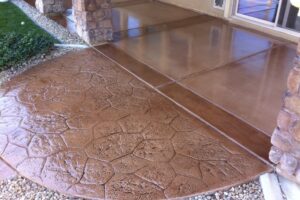When it comes to enhancing the visual appeal and longevity of your pool, tile replacement is a transformative project that can revitalize even the most weathered swimming spaces. While it might seem daunting, replacing pool tiles isn’t just about aesthetics—it’s also an opportunity to address structural issues that, if left unattended, could compromise the integrity of your pool. In this comprehensive guide, we explore the costs associated with pool tile replacement, share valuable DIY tips for the hands-on homeowner, and offer guidance on when hiring a professional is the best course of action.
Understanding the Cost of Pool Tile Replacement
The cost of pool tile replacement can vary widely, influenced by factors such as the type of tile, labor rates, and the extent of the project. On average, homeowners can expect to spend between $2,000 and $5,000 for a full pool tile replacement. This price can increase depending on the pool’s size and the type of tile chosen, with high-end materials like glass and porcelain tiles costing significantly more.
Breakdown of Key Cost Factors:
- Type of Tile – Ceramic tiles are typically the most budget-friendly, while glass tiles and natural stone add a premium touch, often doubling the overall material costs.
- Labor – Labor rates for tile replacement range from $50 to $100 per hour, with complex designs requiring more time and skill.
- Extent of Repair – Replacing only damaged sections is less expensive than a full overhaul, making targeted replacement an option for budget-conscious homeowners.
Beyond materials and labor, additional costs can arise from prep work. Old tiles must be removed, the surface must be smoothed and prepared, and any underlying issues (like cracks) need to be repaired before new tiles can be installed. These are essential steps that ensure your new tiles adhere properly and provide long-lasting durability.
DIY Pool Tile Replacement: Is It Feasible?
For those with a knack for DIY projects, replacing pool tiles on your own can be an appealing option. However, this undertaking requires a solid understanding of the process, specialized tools, and a careful approach. Attempting a DIY tile replacement without adequate preparation could lead to uneven tiles or water seepage issues.
Essential Steps for DIY Pool Tile Replacement
- Drain the Pool – Before beginning, ensure the water level is below the tiles you wish to replace. For full replacement projects, draining the pool completely may be necessary.
- Remove Old Tiles – Using a chisel and hammer, carefully chip away the old tiles. Exercise caution to avoid damaging the underlying surface, which can lead to costly repairs.
- Prepare the Surface – Clean the area thoroughly, removing any adhesive remnants to create a smooth surface. Apply a layer of waterproof adhesive, which will ensure the tiles stay in place.
- Install New Tiles – Press each tile firmly into the adhesive, ensuring consistent spacing. After all tiles are set, allow the adhesive to dry for at least 24 hours before applying grout.
- Apply Grout and Sealant – Once the tiles are set, apply grout between each tile and wipe off any excess. Applying a sealant afterward will protect the grout and tiles from water damage and staining.
For small-scale repairs, such as replacing a few damaged tiles, DIY can be a practical solution. However, for extensive replacements or intricate designs, it’s often best to seek professional assistance.
Pool Waterline Tile Replacement
The waterline tile is one of the most visible and frequently damaged sections of pool tiling. Due to constant exposure to fluctuating water levels, this area is prone to mineral buildup, staining, and general wear.
Replacing waterline tiles is similar to other pool tile replacements but requires precision to ensure a clean and consistent finish. One of the most critical aspects of waterline tile replacement is alignment—even a slight inconsistency can affect the overall appearance, making a professional touch advantageous for seamless results.
Pool Tile and Coping Replacement: When to Consider Both
Pool coping, the edging that surrounds the pool and provides a cap between the pool structure and the surrounding deck, is as essential for functionality as it is for aesthetics. Over time, coping can become worn or cracked, compromising its protective role. When replacing tiles, it may also be wise to consider updating the coping if there are visible signs of deterioration. Replacing both tile and coping simultaneously ensures consistency in design and prolongs the structural health of your pool.
Signs that coping needs replacement include:
- Visible cracks or looseness
- Uneven surfaces or chips
- Water seepage, which can weaken the pool walls
Pool tile and coping replacement done together allow for a unified, cohesive design and can save on labor costs, as contractors won’t need to return to address coping issues separately.
Choosing Replacement Tiles for a Modern Pool Look
With advancements in tile design, homeowners now have an array of modern options to choose from, whether seeking a minimalist aesthetic or a bold, colorful statement. Here are some popular choices:
- Glass Tiles – Known for their reflective quality, glass tiles can add an opulent feel. They’re durable, resistant to water damage, and available in various colors.
- Porcelain and Ceramic Tiles – Classic and highly customizable, these tiles are cost-effective and suitable for waterline tiling. Glazed finishes enhance durability and offer easy maintenance.
- Natural Stone Tiles – For those seeking a more rustic or earthy appeal, natural stone tiles like travertine and slate provide a unique look. They require more maintenance but add a luxurious, timeless element to your pool.
When selecting replacement tiles, consider factors like durability, maintenance requirements, and how they complement your overall outdoor aesthetic. For pools exposed to intense sunlight, UV-resistant tiles can prevent fading over time.
When to Hire a Professional for Pool Tile Replacement
While DIY may be tempting, there are situations where hiring a professional is not only more convenient but also essential to avoid costly mistakes. Professionals bring specialized tools and knowledge to the table, ensuring that tiles are installed correctly and will withstand water pressure and exposure.
Benefits of Hiring a Professional:
- Expert Precision – Professionals ensure perfect alignment and secure installation, reducing the chances of leaks and other issues.
- Time Savings – Large-scale projects can be time-intensive for DIY enthusiasts, while experienced contractors complete jobs efficiently.
- Long-Lasting Results – Professionals use high-quality materials and advanced techniques, which contribute to the longevity and resilience of the tiles.
In complex scenarios—such as when coping replacement is involved or when dealing with extensive water damage—professional help is invaluable for safeguarding your investment.
Frequently Asked Questions (FAQs)
How much does it cost to replace pool tiles?
The cost varies depending on the tile type, extent of the project, and labor rates. On average, it can range from $2,000 to $5,000 for full replacement.
What are the steps involved in a DIY pool tile replacement?
DIY tile replacement involves draining the pool, removing old tiles, preparing the surface, setting new tiles with adhesive, and applying grout and sealant.
How can I replace old waterline tiles in a swimming pool?
To replace waterline tiles, drain the pool below the tile line, remove old tiles, clean the area, and install new tiles with waterproof adhesive. Finish with grout and sealant for protection.
When should pool coping be replaced along with the tile?
If the coping shows signs of wear, such as cracks or water seepage, it’s beneficial to replace it with the tiles for a uniform look and improved pool integrity.
What are the best replacement tile options for modern pools?
Glass tiles, porcelain, and natural stone are popular choices for modern pools, each offering unique aesthetic and durability benefits.







Leave a Reply
Your email is safe with us.